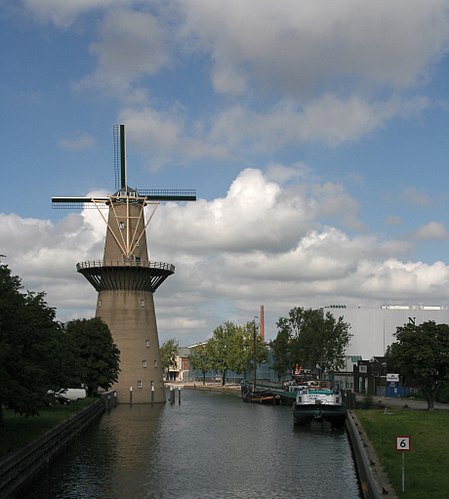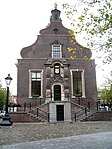De Nolet
Buildings and structures in SchiedamDutch building and structure stubsTower mills in the NetherlandsWindmills in South Holland

De Nolet (also known as Noletmolen) is a wind turbine in Schiedam, The Netherlands which is disguised as a traditional Schiedam windmill. De Nolet has a tower height of 43 metres and a gross height of 55 metres including its rotor tips.It is 9 metres higher than De Noord which is the tallest windmill in the world. De Nolet was built in 2005 by the Nolet Distillery to power their brewing factory which produces the Ketel One vodkas and gins.
Excerpt from the Wikipedia article De Nolet (License: CC BY-SA 3.0, Authors, Images).De Nolet
Hoofdstraat,
Geographical coordinates (GPS) Address Website External links Nearby Places Show on map
Geographical coordinates (GPS)
| Latitude | Longitude |
|---|---|
| N 51.9075 ° | E 4.4083333333333 ° |
Address
Noletmolen (De Nolet)
Hoofdstraat
3114 GD
South Holland, Netherlands
Open on Google Maps







